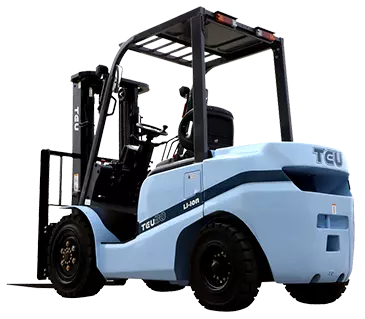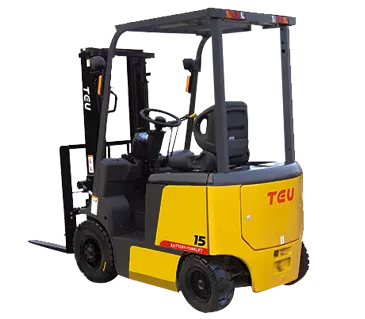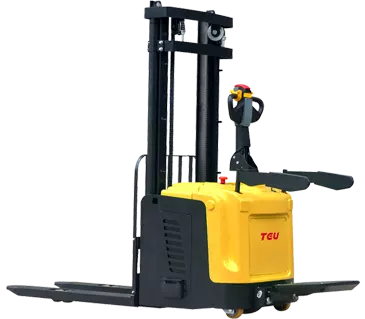Forklifts are widely used material handling equipment in warehouses, logistics, construction sites, ports, and various other industries. They not only improve work efficiency but also significantly reduce the burden of manual labor. While forklifts are common in everyday operations, many people are unaware of their types, functions, and the factors to consider when choosing one. This article aims to provide a comprehensive understanding of forklift types, their functions, and their applications in different settings, helping you make informed decisions when selecting a forklift.
Basic Forklift Classification
Forklifts come in various types, categorized based on different standards and work requirements. Typically, forklifts can be classified according to their power source, operational mode, structural features, and intended use. Below, we will explore these classification criteria in detail.
By Power Source
The power source of a forklift is a key factor that influences its work environment and operational efficiency. Forklifts are generally divided into Internal Combustion Counterbalance Forklifts, Electric Counterbalance Forklifts and Hybrid Forklifts based on their power source.
-
Internal Combustion Counterbalance Forklifts
These forklifts use gasoline, diesel, liquefied petroleum gas (LPG), or natural gas as fuel. The main advantage of internal combustion forklifts is their strong power, making them suitable for long hours of continuous operation with easy refueling.
Applications: These forklifts are ideal for outdoor environments such as construction sites, docks, and yards. However, they have higher emissions and should be used in environments where this is acceptable. -
Electric Counterbalance Forklifts
Electric forklifts typically use batteries (such as lead-acid or lithium batteries) for power. Compared to internal combustion forklifts, electric forklifts are more environmentally friendly, quieter, and require less maintenance.
Applications: They are commonly used in indoor environments such as warehouses, food processing, and pharmaceutical industries where air quality is a concern. Due to their clean and pollution-free nature, electric forklifts are becoming the preferred choice in urban warehouse logistics. -
Hybrid Forklifts
Hybrid forklifts combine internal combustion engines with electric power sources. They are often used in environments that require frequent transitions between indoor and outdoor operations or where fuel efficiency is critical.
Applications: Hybrid forklifts are suitable for workplaces that require frequent switching between indoor and outdoor environments, as they balance the need for long-lasting power and environmental considerations.
By Operating Mode
Forklifts can also be classified based on how the operator interacts with the forklift. It can be divided into Sit-down Forklifts, Stand-up Forklifts and Walkie Forklifts.
-
it-down Forklifts
The operator sits in a driving compartment to operate the forklift, typically seen in larger counterbalance forklifts.
Applications: Sit-down forklifts are suited for long-distance transport and heavy-duty operations, especially in larger spaces such as warehouses, production facilities, and docks. -
Stand-up Forklifts
The operator stands while operating the forklift, often used for narrow aisle work and stacking in high racking systems.
Applications: Stand-up forklifts are commonly used in narrow aisle warehouse operations and are ideal for environments that require flexibility and maneuverability. -
Walkie Forklifts
In walkie forklifts, the operator walks behind or beside the forklift to operate it, typically either manual or electric pallet trucks.
Applications: They are best for short-distance, light-load transportation tasks, commonly found in warehouses, loading docks, and small factories.
By Structural Features and Application
Forklifts can also be classified according to their structural features and the specific tasks they are designed to perform, including counterbalance forklifts, reach trucks, stackers, pallet trucks, turret trucks, order pickers, and sideloader forklifts.
-
Counterbalance Forklifts
These forklifts have counterweights at the rear, making them highly stable. They are widely used for general lifting and horizontal transport tasks.
Applications: Counterbalance forklifts are used in most heavy-duty operations, such as warehouse handling, production facilities, and logistics centers. -
Reach Trucks
Reach trucks have a mast that extends forward, allowing the forklift to pick up goods from higher shelves and then retract.
Applications: Reach trucks are designed for narrow aisle applications and high-racking operations, ideal for maximizing space utilization in warehouses. -
Stackers
Stackers are primarily used for stacking and short-distance transportation. They can be either manual or electric and are generally smaller in size.
Applications: Stackers are perfect for medium to low-level shelving and are commonly used in warehouse management for efficient space use. -
Pallet Trucks
Pallet trucks, often seen in manual or electric versions, are designed to lift and move pallets horizontally.
Applications: These are primarily used for short-distance transport tasks within warehouses, loading docks, and small factories. -
Turret Trucks
Turret trucks can rotate their forks in three directions, allowing them to pick and place goods on both sides of narrow aisles.
Applications: Ideal for very narrow aisle (VNA) warehouses, turret trucks maximize space efficiency by enabling operations in tight spaces. -
Order Pickers
Order pickers have a lifting platform where the operator can ride along, enabling them to pick goods from high shelves.
Applications: They are commonly used in e-commerce warehouses and parts depots for efficient order picking. -
Sideloader Forklifts
Sideloader forklifts have forks mounted on the side, enabling them to pick up and transport long or bulky items.
Applications: These forklifts are particularly useful for transporting long materials such as lumber, pipes, and steel beams.
Key Parameters to Consider When Choosing a Forklift
When selecting a forklift, it’s not just about the type but also about certain key technical parameters. These parameters affect the forklift’s performance and adaptability to specific tasks. Below are some key parameters to consider:
-
Rated Load: The maximum weight a forklift can safely lift at its standard load center. Choosing the right rated load is crucial for forklift safety and performance.
-
Maximum Lifting Height: The highest point the forklift can lift. This parameter is vital for high stacking tasks, where the correct lifting height is essential.
-
Load Center Distance: The horizontal distance from the load’s center of gravity to the vertical face of the forks. Typically, this is either 500mm or 600mm, and it affects the stability of the forklift.
-
Minimum Turning Radius: The smallest radius within which a forklift can turn. This is important for narrow aisles, as forklifts with a smaller turning radius are more maneuverable in tight spaces.
-
Aisle Width: The minimum width required for a forklift to pass through an aisle. This parameter is crucial when planning for warehouse layouts and determining the type of forklift best suited for the space.
-
Tire Type: Forklifts can be equipped with pneumatic tires or solid tires. Pneumatic tires are suitable for rough outdoor surfaces, while solid tires work best on smooth indoor floors. Choosing the right tire type ensures the forklift’s stability and efficiency in its operating environment.
Conclusion
Forklifts come in a variety of types, and selecting the right forklift requires considering the working environment, type of material to be handled, and specific operational requirements. Understanding the classification of forklifts, their key technical parameters, and their special applications can help you make a smarter choice and increase operational efficiency. We hope this guide helps you better understand forklift types and selection criteria, making forklifts a powerful tool in your workplace operations.





